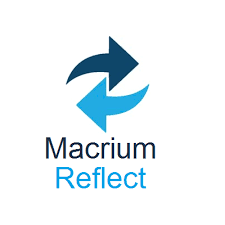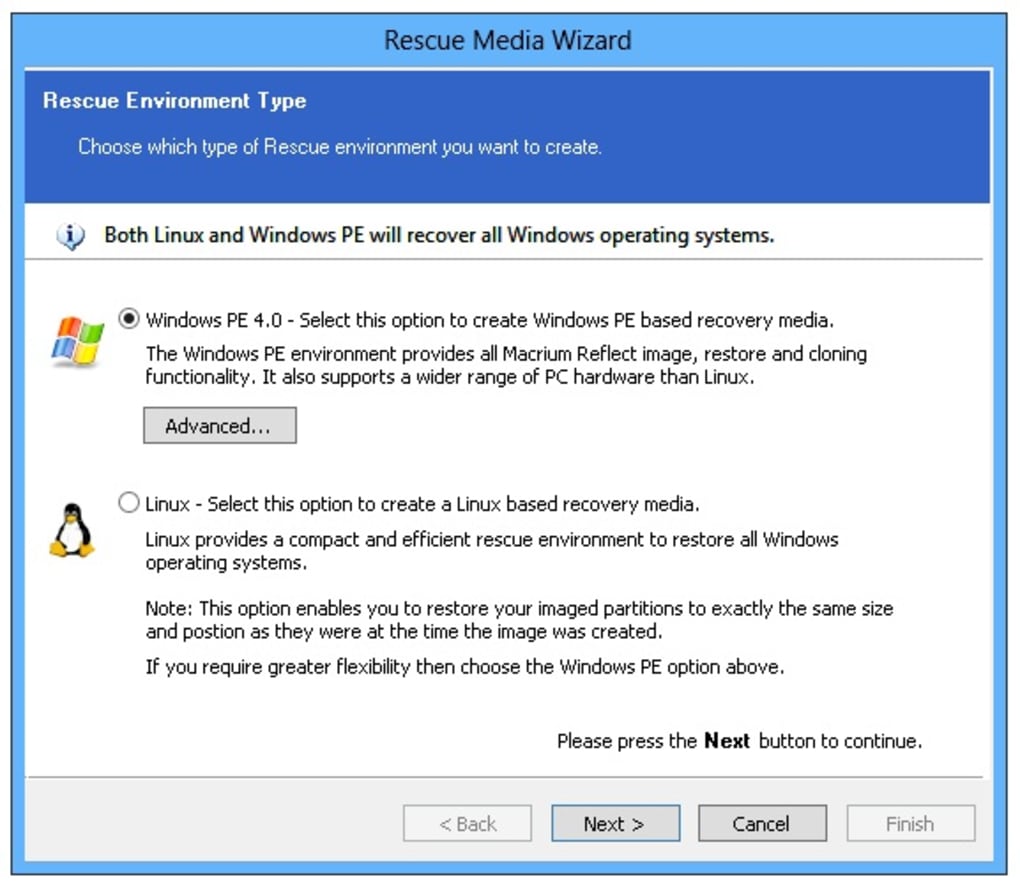

- #Macrium reflect free linux how to
- #Macrium reflect free linux install
- #Macrium reflect free linux full
- #Macrium reflect free linux windows 10
- #Macrium reflect free linux plus
The changes are temporary and the drive image will revert to the pristine state it was in when you’re done working with it. By checking “Make writable” you can mount that virtual drive file (even though the virtual drive is actually inside the mounted backup disk image). Let’s say, for example, your old computer had a virtual hard drive on it and you need to open that up to get some old tax forms.

There are many applications wherein you need to write and/or execute something in order to extract the data you need from them. The second option “Make writable” sounds like a horrible idea but is actually harmless and very useful. (Seriously Macrium, we love you for including this feature and saving us from having to manually wrestle with old file permissions). This is enormously convenient as old NTFS permissions present quite a hassle when browsing old operating system disks on a new operating system.
#Macrium reflect free linux full
The first option, “Enable access to restricted folders”, mounts the drive image with full NTFS rights to override permissions that were set on another computer (or an old operating installation on the same computer you’re currently using). We suggest you check them both, but first a word on their function. Check the image you wish to mount and then select an unused drive letter we selected “W:”.īelow the list there are two options: “Enable access to restricted folders” and “Make writable”. Once the list is populated you can select the image you wish to mount (simple enough in our case because there is only a single disk image in that directory). When you’ve selected a drive or folder that contains a proper Macrium disk image it will popular the list below the browse menu. Navigate to the location of your disk image and select the drive or folder it is located in. In the subsequent menu, select “Image Files” and then click “Browse for folder ….”. With Macrium Reflect launched, switch from the default “Disk Image” tab to the “Restore” tab as seen in the screenshot below.Ĭlick on the link, in the left hand navigation panel, labeled “Open an image or backup file in Windows Explorer. Note: you can skip the step in the installation process where it prompts you to download and create the recovery media (which will save you a bunch of time and around 500MB of bandwidth) as we’re just using the desktop application for this tutorial and not the recovery media.
#Macrium reflect free linux install
If you’re using the machine you originally created the image on it’s highly likely Macrium is still installed, if it isn’t installed you’ll want to grab a copy here and install it fresh. The entirety of your disk image is contained in a single file.īackup image in hand it’s time to fire up Macrium Reflect. If you’ve followed along with this tutorial after using one of our whole-drive image tutorials, however, you don’t need to stress about that.
#Macrium reflect free linux plus
This means if you’ve been using the advanced features in Macrium Reflect like differential or incremental backup then all the pieces need to be in one place (the original plus all the increments) and not just the smaller and later incremental pieces. There’s a big important point to make before we proceed: all the elements of the disk image need to be in one place for this mount-the-image trick to work. Wherever your disk image is you want to locate it for ease of use before proceeding.

For this tutorial we’re using a disk image located on a USB 3.0 backup drive attached to our main computer. The first order of business is locate the disk image. Fortunately for all of us Macrium includes a handy little way to mount your drive image as a virtual drive in Windows so you can browse /Downloads/ or any other folder in the disk image to your heart’s content. If that file isn’t co-located in your regular file backup system and exists only in your drive image then you need a way to get at that file without writing the entire image to a new drive.
#Macrium reflect free linux how to
Let’s say, for example, you followed one of our tutorials that uses Macrium Reflect, like How to Create an Image of Your PC Before Upgrading to Windows 10, and then some time later you realize there was a file in your /Downloads/ folder that you really needed.
#Macrium reflect free linux windows 10
RELATED: How to Create an Image of Your PC Before Upgrading to Windows 10 But best practice isn’t always the practice we follow and sometimes you need a file trapped inside a disk image. Ideally you have parallel backup practices: one backup workflow for things like /My Documents/ and your photos and a tandem backup process for your entire system drive so you can restore your computer in the event of a failure or serious problem.


 0 kommentar(er)
0 kommentar(er)
